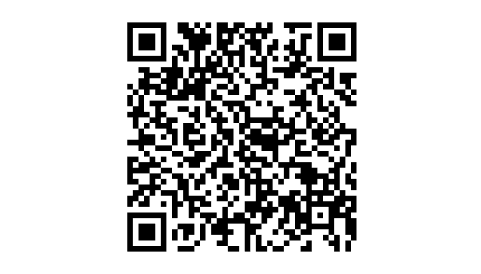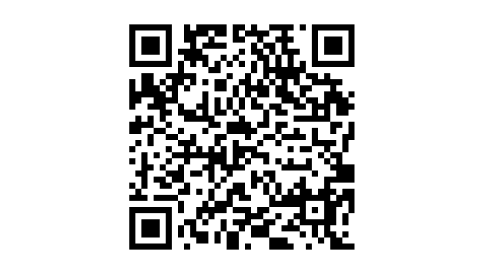医療安全推進対策
中央市民病院では、事故防止のための中枢機関として、医療安全管理会議(平成24年4月にリスクマネジメント部会から名称変更)及び医療安全管理室を設置しています。また、各部門において医療安全を担当するセーフティマネジャーを選任しています。
医療安全管理室は、医療安全管理を実施する院長直属の組織であり、医療安全対策と患者さんの安全確保を推進するために専従の医療安全管理者を置くなど、各部門・部署と連携した継続的な医療安全活動に取り組んでいます。具体的な業務としては、インシデント・アクシデント事例の実態把握と背景要因の分析、再発防止策の検討、改善策等の指示・啓発・広報及び医療安全に関する職員研修の企画等を行っています。
医療安全管理会議は、毎月1回、医療事故の防止や教育等も含めた医療の質の向上など医療の安全管理に関する事項について検討を行うなど、病院の医療安全対策の統括的役割を担っています。
そのほか、感染防止委員会(感染管理に関する問題の検討及び方針の決定)、薬事委員会(医薬品の安全管理の遂行)、医療機器安全管理委員会(医療機器の安全管理・確保)、職員安全衛生委員会(労働災害の防止等)、診療材料検討委員会(新規医療材料等採用の審議等)と連携して活動をしています。
なお、医療安全管理室のこれまでの取り組みは以下のとおりです。
各項目をクリックすると詳細が表示されます
令和4年度は、引き続き医療安全ミーティングを毎日開催したほか、医療安全管理会議を毎月開催し、医療安全に関する事例検討・分析などを行いました。アクシデント事例、院内警鐘事例に関しては、医療安全リーダー会議にて実務担当者へ周知し、事例検討を行いました。
医療安全研修については、新型コロナウィルス感染症拡大防止の観点から昨年度実施を見送ったチームSTEPPSを十分な感染対策を行ったうえで、看護部を中心に計24回実施し、ICLSやBLS研修を例年通り定期的に開催しました。またRRSブラッシュアップ研修をWebで開催したほか、 e-ラーニング研修では当院スタッフが独自で作成した研修(全38コース)を実施するなど、独自性及び充実度の強化、受講環境について設備面の強化を図りながら全てのスタッフが年2回以上円滑に受講できるよう取り組みました。
医療安全に関する啓発活動としては、2019年6月から放射線診断レポート等の見落とし防止並びに治療計画立案の迅速化の支援を目的に、院内レポートチェックシステムを運用しています。日々の運用で発生した問題点について、その都度、医療安全管理会議で対策を検討・実践しており、マニュアルの改訂も検討・実施しています。また、注意喚起のための通知文やポスターをタイムリーに作成し掲示することにより医療事故の予防と防止に努めました。
服薬管理の取り組みについて、令和5年度より、新たに作成した内服管理マニュアルを、各病棟に導入しました。今後は使用状況に確認や監査の実施、服薬に関するインシデントレポート数や内容の推移を分析し、マニュアルの改訂を行いながら、より安全に服薬管理が行えるよう取り組んでいきます。
令和3年度は、引き続き医療安全ミーティングを毎日開催したほか、医療安全管理会議を毎月開催し、医療安全に関する事例検討・分析などを行いました。アクシデント事例、院内警鐘事例に関しては、医療安全リーダー会議にて実務担当者へ周知し、事例検討を行いました。
医療安全研修については、新型コロナウィルス感染症拡大防止の観点から昨年度実施を見送ったチームSTEPPSを十分な感染対策を行ったうえで、看護部を中心に計14回実施し、ICLSやBLS研修を例年通り定期的に開催しました。またRRSブラッシュアップ研修をWebで開催したほか、 e-ラーニング研修では当院スタッフが独自で作成した研修(全43コース)を実施するなど、独自性及び充実度の強化、受講環境について設備面の強化を図りながら全てのスタッフが年2回以上円滑に受講できるよう取り組みました。結果、受講率は100%(協力法人等含む)を達成しました。
医療安全に関する啓発活動としては、2019年6月から放射線診断レポート等の見落とし防止並びに治療計画立案の迅速化の支援を目的に、院内レポートチェックシステムを運用しているところですが、日々の運用で発生した問題点について、その都度、医療安全管理会議で対策を検討・実践しており、マニュアルの改訂も検討しています。
転倒・転落防止のための取り組みについては、転倒・転落防止マニュアルに基づき、患者さんの状態変化があった際に随時転倒・転落の危険性を評価し、危険性に応じた予防策を講じると共に患者さんに転倒・転落防止の必要性を説明し協力をお願いしています。なお、行動制限に関して当院では患者さんの身体的精神的負担の少ない必要最小限の方法を選択すると共に随時観察を行い、早期に行動制限が解除できるよう努めています。
さらに、医療安全に関するポケットマニュアルについても改訂版を作成し、携帯できるように各スタッフへ配布しました。また、注意喚起のための通知文を定期的に配布することにより医療事故の予防と防止に努めました。
令和2年度は、新型コロナウィルス感染症の影響から毎年実施していた集合型研修の開催が制限され、e-ラーニングを積極的に用いた研修体制にシフトしていきました。それ以外では医療安全ミーティングを毎日開催したほか、医療安全管理会議を毎月開催し、医療安全に関する事例検討・分析などを行いました。アクシデント事例、院内警鐘事例に関しては、医療安全リーダー会議にて実務担当者へ周知し、事例検討を行いました。
医療安全研修については、参加型の研修が望ましいチームSTEPPSは新型コロナウィルス感染症拡大防止の観点から実施を見送ったものの、十分な感染対策を行ったうえでICLSやBLS研修を例年通り定期的に開催しました。またRRSブラッシュアップ研修をWebで開催したほか、 e-ラーニング研修では当院スタッフが独自で作成した研修(全28コース)を実施するなど、独自性及び充実度の強化、受講環境について設備面の強化を図りながら全てのスタッフが年2回以上円滑に受講できるよう取り組みました。結果、受講率は100%(協力法人等含む)を達成しました。
医療安全に関する啓発活動としては、2019年6月から放射線診断レポート等の見落とし防止並びに治療計画立案の迅速化の支援を目的に、院内レポートチェックシステムを運用しているところですが、更なる医療安全の向上を目的に、新たに「画像所見漏れ対策WG」を立ち上げ、画像診断オーダーに関するインシデント削減に向け事例の検討及び対策について検討しました。検討結果については医療安全管理者会議等を通じ、院内職員へ周知を行いました。
患者間違い防止の取り組みについては、新生児も含めて全ての患者さんが使用しているリストバンドに、氏名のほか生年月日も表記するように変更しました。これにより、患者さん自身に氏名と生年月日を名乗っていただきながら、リストバンドを目視することで更なる患者さん間違いの防止に努めています。
転倒・転落防止のための取り組みについては、転倒・転落防止マニュアルに基づき、患者さんの状態変化があった際に随時転倒・転落の危険性を評価し、危険性に応じた予防策を講じると共に患者さんや家族の方に転倒・転落防止の必要性を説明し協力をお願いしています。なお、行動制限に関して当院では患者さんの身体的精神的負担の少ない必要最小限の方法を選択すると共に随時観察を行い、早期に行動制限が解除できるよう努めています。
さらに、医療安全に関するポケットマニュアルについても改訂版を作成し、携帯できるように各スタッフへ配布しました。また、注意喚起のための通知文を定期的に配布することにより医療事故の予防と防止に努めました。
2021年8月
令和元年度は、引き続き医療安全ミーティングを毎日開催したほか、医療安全管理会議を毎月開催し、医療安全に関する事例検討・分析などを行いました。アクシデント事例、院内警鐘事例に関しては、医療安全リーダー会議にて実務担当者へ周知し、事例検討を行いました。
医療安全研修については、チームSTEPPSや、RRSブラッシュアップ研修、シミュレーション研修といった職員参加型研修を中心に開催しました。(令和元年度の研修実施回数→102回)また、本年度もe-ラーニングを継続し、すべてのスタッフが年2回以上の医療安全研修を受講できるよう取り組みました。
医療安全に関する啓発活動としては、放射線診断レポート及び病理診断レポートの見落とし防止並びに治療計画立案の迅速化を支援し、医療安全の向上を図ることを目的として、2019年6月3日から院内レポートチェックシステムの運用を開始しました。また、ウイルス性肝炎患者の見落とし防止及び適切な治療・フォローアップにつなげることを目的として、2020年3月2日から肝炎チェックシステムの運用を開始しました。さらに、インシデント事例をもとに、マニュアルの改訂を随時行い、WEBMINKに掲載し周知を図りました。
患者間違い防止の取り組みについては、リストバンドを新生児も含めて全ての患者さんに使用できるようにし、患者さん自身にも協力していただいて、氏名と生年月日を名乗っていただく方法を推進し、患者さん間違いの防止に努めています。
転倒・転落防止のための取り組みについては、転倒・転落防止マニュアルに基づき、患者さんの状態変化があった際に随時転倒・転落の危険性を評価し、危険性に応じた予防策を講じると共に患者さんや家族の方に転倒・転落防止の必要性を説明し協力をお願いしています。なお、行動制限に関して当院では患者さんの身体的精神的負担の少ない必要最小限の方法を選択すると共に随時観察を行い、早期に行動制限が解除できるよう努めています。
さらに、医療安全に関するポケットマニュアルについても改訂版を作成し、携帯できるように各スタッフへ配布しました。また、注意喚起のための通知文を定期的に配布することにより医療事故の予防と防止に努めました。
2018年度診療報酬改定では医療安全対策について、医療機関の枠組みを超えた連携での取り組みを評価する加算が新設されたことを受けて、引き続き医療安全対策に関する事例・情報の共有や相互の評価を行い、医療安全の質の向上を図りました。
2020年9月
平成30年度は、引き続き医療安全ミーティングを毎日開催したほか、医療安全管理会議を毎月開催し、医療安全に関する事例検討・分析などを行いました。また、アクシデント事例、院内警鐘事例に関しては事例検討を行い、医療安全リーダー会議にて実務担当者へ周知しました。 また、平成30年10月には電子カルテの更新に伴う運用の変更や各種マニュアルの改訂を行いました。
医療安全研修については、チームSTEPPSや、RRSブラッシュアップ研修、シミュレーション研修といった職員参加型研修を中心に開催しました。(平成30年度の研修実施回数→102回)また、本年度もe-ラーニングを継続し、すべてのスタッフが年2回以上の医療安全研修を受講できるよう取り組みました。
医療安全に関する啓発活動としては、院内発症脳梗塞に対するRRS起動基準変更1年を経過し、その成果について院内で報告を行いました。又、インシデント事例をもとに、マニュアルの改訂を随時行い、WEBMINKに掲載し周知を図りました。
患者間違い防止の取り組みについては、ネームバンドの活用や診察券などによる患者氏名の確認だけでなく、患者さん自身にも協力していただいて患者間違いの防止に努めています。
転倒・転落防止のための取り組みについては、転倒・転落防止マニュアルに基づき、患者さんの状態変化があった際に随時転倒・転落の危険性を評価し、危険性に応じた予防策を講じると共に患者さんや家族の方に転倒・転落防止の必要性を説明し協力をお願いしています。なお、行動制限に関して当院では患者さんの身体的精神的負担の少ない必要最小限の方法を選択すると共に随時観察を行い、早期に行動制限が解除できるよう努めています。
さらに、医療安全に関するポケットマニュアルについても改訂版を作成し、携帯できるように各スタッフへ配布しました。また、注意喚起のための通知文を定期的に配布することにより医療事故の予防と防止に努めました。
2018年度診療報酬改定では医療安全対策について、医療機関の枠組みを超えた連携での取り組みを評価する加算(医療安全対策地域連携加算)が新設されたことを受けて、医療安全対策に関する他の医療機関との事例・情報の共有や相互の評価を行い、医療安全の更なる質の向上を図りました。
2019年7月
平成29年度は、引き続き医療安全ミーティングを毎日開催したほか、医療安全管理会議を毎月開催し、医療安全に関する事例検討・分析などを行いました。アクシデント事例、院内警鐘事例に関しては、医療安全リーダー会議にて実務担当者へ周知し、事例検討を行いました。 また、11月には先端医療センター病院を統合し、中央市民病院の南館として運用を始めましたので、それに合わせて南館の診療マニュアル並びに南館RRS体制を整え、それに伴う研修を行い、本館と同様の医療安全体制を整備しました。
医療安全研修に関しては、チームSTEPPSや、RRSブラッシュアップ研修、シミュレーション研修を中心に、本年度もe-ラーニングを導入し、すべてのスタッフが年2回以上の医療安全研修を受講できるよう取り組みました。
医療安全に関する啓発活動としては、院内発症脳梗塞に対するRRS起動基準や運用マニュアルを定め、研修や病棟内にポスター掲示を行いました。又、インシデント事例をもとに、マニュアルの改訂を随時行い、WEBMINKに掲載し周知を図りました。
さらに、医療安全に関するポケットマニュアルについても改訂版を作成し、携帯できるように各スタッフへ配布しました。また、注意喚起のための通知文を定期的に配布することにより医療事故の予防と防止に努めました。
平成30年7月
平成28年度は、引き続き医療安全ミーティングを毎日開催したほか、医療安全管理会議を毎月開催し、医療安全に関する事例検討・分析などを行いました。また、医療安全リーダー会議を毎月開催し、未然防止対策の周知を実務担当者へ行いました。例えばDVT(深部静脈血栓)予防の評価を徹底することや、各科当直マニュアルの整備を実施しました。
また、本年度からe-ラーニングによる医療安全研修を導入し、全てのスタッフが自分の都合の良い時間にインターネットを活用して自宅のパソコンからでも学習出来るシステムを取り入れました。医師、看護師だけではなく、他の職種にも役立つ事例を動画により疑似体験することで、幅広く医療安全に対する知識を身に付けられるように取り入れました。
医療安全に関する啓発活動としては、事故防止の具体的な手法等の周知・徹底を通じて、職員個々の安全意識の向上と院内全体の医療安全の向上を目的として、医療安全研修会として(「医療ガス講習会」「MR検査研修会」「インスリン療法研修会」「ガラスバッチ研修会」「NCM講演会」「RST勉強会」「造影検査のリスク管理」「チームSTEPPS」「医療メディエーター研修」)や、実技研修では (「心肺蘇生講習会」「中心静脈カテーテル挿入研修」「胸腔ドレーン研修」「人工呼吸器の安全管理」「輸血を安全に取り扱うため」「救命救急研修」「急変時対応研修」)を開催しました。
さらに、医療安全に関するポケットマニュアルについても改訂版を作成し、携帯できるように各スタッフへ配布しました。また、注意喚起のための通知文を定期的に配布することにより医療事故の予防と防止に努めました。
平成29年6月
平成27年度は、引き続き医療安全ミーティングを毎日開催したほか、医療安全管理会議を毎月開催し、医療安全に関する事例検討・分析などを行いました。また、医療安全リーダー会議を毎月開催し、未然防止対策の周知を実務担当者へ行いました。例えば新規材料の使用方法について周知を徹底することや、胸腔ドレーンの研修対象者を設定し受講を必須とすることなどを新たに実施しました。
また、10月から施行された「医療事故調査制度」について、本制度の概要を職員に周知するとともに、「医療事故調査の指針」及び「医療事故調査制度への対応マニュアル」を作成しました。そして、院内で発生した全ての死亡事例に対して、死亡事例発生届を基に該当の適否を迅速に判断するチェック体制の整備を行いました。これにより、本制度に該当する事例が発生した場合、スムーズに対応できる運用を構築しました。
医療安全に関する啓発活動としては、事故防止の具体的な手法等の周知・徹底を通じて、職員個々の安全意識の向上と院内全体の医療安全の向上を目的として、医療安全研修会(「医療ガス講習会」「MR検査研修会」「インスリン療法研修会」「ガラスバッチ研修会」「輸血研修会」「NCM講演会」「RST勉強会」「医療事故調査制度」「チームSTEPPS」)や、実技研修 (「心肺蘇生講習会」「中心静脈カテーテル挿入研修」「胸腔ドレーン挿入研修」「救命救急研修」「急変時対応研修」)を開催し、また職務のため受講できなかった職員に対してe-learning学習を行いました。これによって全職員が最低2回以上の医療安全講習が受けられるようになりました。
さらに、医療安全に関するポケットマニュアルについても改訂版を作成し、携帯できるように各スタッフへ配布しました。また、注意喚起のための通知文を定期的に配布することにより医療事故の予防と防止に努めました。
平成28年6月
患者さん・医療従事者のパートナーシップ
患者さんが質の高い医療を安全かつ快適に受けるためには、患者さんと医療従事者の間によりよい信頼関係を築き、協働(パートナーシップ)して取り組むことが必要です。そのため神戸市立医療センター中央市民病院では、次のような活動方針を定めています。
1. 患者さん自身が医療方針を適切に自己決定できるように支援いたします。
- 主治医は、病気の診断、検査、手術を含む治療について、できるだけわかりやすい丁寧な説明を心がけ、患者さん自身が医療方針を決定できるよう支援します。患者さん自身も、質問や気がかりなことがあれば遠慮なくお尋ねください。
- 他の病院・医師の意見(セカンドオピニオン)も聞いてみたいと思われる場合には、遠慮なくお尋ねください。
- 自分が受けている医療を知るためにカルテ開示を請求できます。遠慮なく請求してください。(窓口:医事課)
2. 安全管理のために患者さんやご家族のご協力をお願いします。
- 人違いを防ぐために、検査や受付など各所で、お名前をお聞きしております。フルネームでお答えください。
- ご自身の既往症や診療歴・アレルギー歴などの医療情報をできるだけ正確に医師または看護師等に教えてください。
- 診療を受けているときに不安を感じたらいつでもお伝えください。
- 他院で処方された薬や服薬中の市販の薬剤等については、服薬情報、お薬手帳、お薬説明書とともに必ず医師または看護師にお伝えください。
3. 適切な医療情報の提供に努め、医療に関する相談に応じています。
- 患者さんや市民向け健康講座・病気講座を開催します。詳しくは総合案内にてお尋ねください。
- 患者さんやご家族の抱える社会問題、社会復帰、医療費負担、施設入所や介護相談、医療事故等の相談にも応じています。(窓口:患者サポートセンター)
4. その他のお願い
- 他の患者さんの医療の妨げにならないよう、病院の規則を守り、また職員の説明をよく聞いてください。
- 医療サービス全般に対する苦情や提案などについては、院内に設置している意見箱にご意見をお寄せください。ご意見に対する返事については、直接回答するか2階玄関掲示板に掲示しています。

